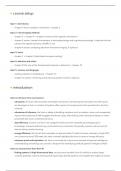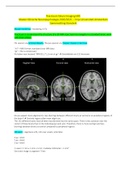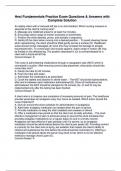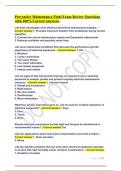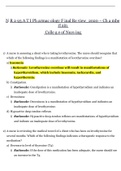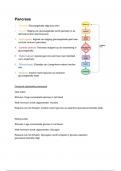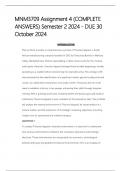Summary
Summary The Student's Guide to Cognitive Neuroscience - SOW-BKI136 (Brain)
- Course
- Institution
- Book
A summary of "The Student's Guide to Cognitive Neuroscience" by Jamie ward, based on the course material of the Brain (SOW-BKI136). This summary is based on the lecture notes, extra reading material and chapter 1-5, 7, 9, 10 and 12.
[Show more]
